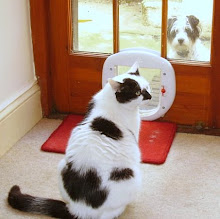A retired Chemistry teacher has become a gramophone specialist
John Sleep has been collecting vintage gramophones, phonographs and records at his workshop in Crantock, near Newquay since he retired in 1993 and now has a collection which dates back over 100 years. “It fascinates me to sell things,” he says. “I just find it great fun to buy something, repair it and sell it to some one who enjoys it. That's a great thrill.”
John is one of the few people in the country, and the only person in the West Country, to specialise in such things. “Whether you want to buy or sell, or have your machine properly restored, I can help,” he says. He also supplies records, cylinders, and new needles of various types. “The things I buy nearly always need work and I sell them with a guarantee,” says the ex-teacher now known as The Gramophone Man.
In 1993 John's life took a turn for the unexpected. “I was trained as a carpenter so when I retired I started repairing antiques for people – chairs mainly,” he explains. “I happened on a gramophone which I took to pieces and found out that it was quite simple – I don't like things being thrown away, so it was absolutely right for me because I can always get them to work.” From then on John cornered the market. “I don't advertise it very much because it's been unexpectedly busy so I've had to become self employed again!”
John used to buy from collectors' fairs but has found that expensive and time consuming, so now he mostly buys from auctions and on the internet. “The best thing is if I can find a collection of someone's who's died. Then I can perhaps buy a dozen at a time and that keeps me going for a while.” He gives a slow smile. “I've just tallied up and I've bought 1600 gramophones since I started which is a lot really. And that doesn't count the ones I've repaired.”
Having built up a reputation, John now buys increasingly to order. “I've got two or three regular collectors who want certain things, and that's very different from buying casually and hoping you're going to sell – that's a very chancy business.”
John also has a huge record collection that he sells on request. “I've got about 20,000 records dotted round in various people's garages because you never know what people are going to ask for,” he says. “I've just had an order to go to Ireland for the Four Tenors which is unusual – I don't normally keep them.” He points at the extensive collection, neatly labelled, in his workshop. “People are rediscovering records at the moment and they always like 1920s sound and Rock 'n Roll and comedy, music hall, monologues.” But the generations rediscovering this music never heard it first time round. “They've never heard of 78s which is what all of these are. A lot hasn't been transcribed onto modern format but the quality's pretty good.”
John undertakes a lot of repairs that need intricate work. “A gramophone that arrived today will involve new springs, cleaning the motor, and replacing the rubber in the diaphragm inside the sound box.” He also sells a lot of needles overseas. “Almost every day I'll send packets of needles – I've just sent a thousand to New Zealand today.”
Inside the house, John's studio is packed with different phonographs, gramophones and hundreds of books. “There are four types of gramophone,” he explains. “The portable, the table model, the cabinet and the elaborate horn ones.” He then proceeds to illustrate this. “ The sound is the vibration on the record - the sound goes up the horn, and the bigger the horn the louder it will be.”
One horn is so huge it extends the length of the workshop, like a witch's hat. “After the first horn gramophones, they started to make them more compact so the horn is folded back inside,” he explains. “Then you have cabinet sorts, and because people wanted to carry them round for picnics, there are the portable ones.” In the First World War portable gramophones were taken to the trenches to keep spirits up. “That one over there's called the Trench,” he says. “There was a famous advert of one with bullet holes through it.”
But the most popular is the last portable HMV model before they became electrical. “This one's worth £120 but it's not in fantastic condition.” He opens it up and selects a needle to start playing a record. “You change the needles frequently and that needle picks up the vibration in the groove. Everything comes from the soundbox – that's where the music is generated.”
John points to a gramophone by the wall. “This is a genuine HMV before it was called HMV. It was called the Gramophone company, and for a brief spell they were known as the Gramophone and Typewriter Company because they started the typewriter business thinking that gramophones wouldn't last. So this one's called a G & T and the scroll work makes it quite special.”
The prices vary hugely. “There are a huge number of machines made in the 1920s that were often imported and don't have proper names,” John explains. “They're perfectly functional but non-descript; you could buy those for a tenner and wouldn't get much more than £30 or £40 if you tried to sell them. Those are the least attractive. The ones I like most are the Senior Monarch,” he adds. “They're worth about £2,000 which isn't the most expensive but they are the most stylish. You tend to spend money on things which are historically valuable – an original Trademark would be £10,000, not for how it plays but for its historical importance.” He smiles. “It's very exciting when you find something special.”
As a musician, it's important to John that these lovely gramophones are in working order. But his buyers don't always agree. “One of the best I ever had – a Monarch - went to a lady who I knew would use it for decorative purposes: not what it was made for. But she was delighted.”
But however much he might enjoy a particular model, John isn't in a position to become sentimental. “I can't afford to keep them!” he says practically. “Though I'm always interested in miniature ones – if I had a speciality that would be it. But if I find a nice one cheaply I can afford to keep it.”
Looking ahead, John is determined to enjoy his work for as long as he can. “I should think I'd go on for another 5 or 6 years,” he says. “As long as I can travel around and find the items and am able to do the fine work. There's a lot of very fiddly work involved in the repairs, and arthritis is beginning to play a part unfortunately which restricts what I can do a bit.”
He strokes his red setter, snuggled up to him on the sofa. “I'm very glad I found this job,” he says thoughtfully. “It's very mind exercising and interesting. You build up an interesting network of people who help each other out. There are the same organisations here and abroad and I use them all. Without that network I couldn't do what I do.”
John Sleep, Stoke House, West Pentire, Crantock, TR8 5SE.
01637 830 415
07979 097 389
www.windupgram.co.uk
Thursday, 25 March 2010
Subscribe to:
Post Comments (Atom)
















No comments:
Post a Comment